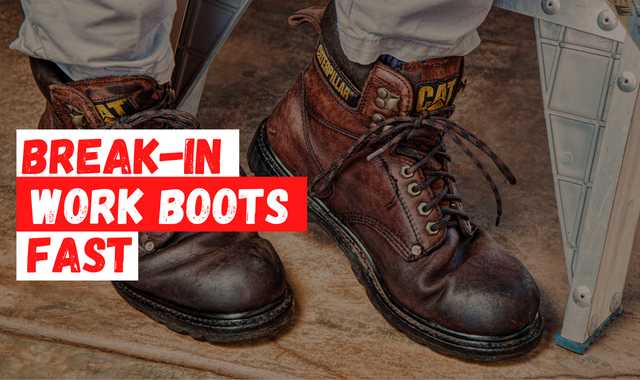Composite Toe vs Steel Toe Work Boots
Choosing the right work boots can be difficult, especially when deciding between composite toe vs steel toe options. Each type offers distinct advantages and disadvantages that cater to different needs and preferences.
In this article, we’ll dive deep into the critical factors that set these two types of boots apart, such as weight, shape, safety, and material. We’ll explore why composite toe boots, despite being bulkier, are gaining popularity for their lightweight nature and evolving design.
On the other hand, steel-toe boots are renowned for their durability and sleek appearance. Additionally, we’ll examine the safety performance of each under-stress test and electric hazards, helping you make an informed choice.
Keep reading to discover which work boots will best suit your requirements and ensure your feet remain protected on the job.
Shape and Weight of Steel and Composite Toes
Composite toe work boots are lightweight due to their Kevlar, carbon fiber, plastic, or fiberglass material, and steel toe work boots are typically available in more styles to provide styling in safety boots.
Composite Toes are more popular nowadays because of their weight, but generally, these are more bulging than steel-toe work boots. Yes, the composite toe boots are indeed improving day by day, and the new ones are becoming thinner and less bulgy.
The bulbous nature is necessary to fulfill the standards of ASTM and make them safe, like steel-toe shoes. Just because composite toe material is not as strong as steel, these are thicker.
Stress Test of the Composite Toe vs Steel Toe Work Boots
Another major issue with composite toe boots is that they pass the initial impact of compression in ASTM tests. But the following impact is very minor and below fair. The Material becomes weaker after compression.
It’s also recommended that replace your composite toe safety boots after any accident or any event that causes stress to the toe. Sometimes there are no signs of damage after a compression event on the composite toes. However, it does not show any signs, but the test shows that the composite toe may be less safe after an event.
According to Research, a steel toe can handle 3.5 tons but when handling the same weight, a composite toe must be much thicker than steel. More bulbous toe boxes will be there.
Ensure the safety, the quality of the material will matter. So keep in mind while choosing a composite toe work boot, the cheaper the composite toe boots lower the material quality, which tends to have low safety. The cheaper one, may not be approved by OSHA and ASTM.
Electric Hazard Test
Many people think composite toe is safer than steel in the case of an electric environment, but actually, it is not. Even, steel toe shoes pass the electric hazard ASTM test more easily than composite toes. So, there is no difference in both toes, in case of electric hazards.
Quick Comparison: Composite Toe vs Steel Toe Work Boots
| Composite Toe | Steel Toe |
|---|---|
| Lightweight | Heavy |
| No Electric Hazard | No Electric Hazard |
| Non-Metalic Toe Cap | High Heat Conductor |
| Bulbous | Smart |
| Non Metalic Toe Cap | Metallic Toe Cap |
Conclusion
Steel or other alloy toes are much stronger than composite materials. The steel toe work boots are less bulbous and look awesome as well as pass the ASTM Safety toe tests. These aspects give the ability to look nicer and can be worn with jeans or other casual dresses.
However, all safety toe work boots (Steel, Composite, or other Alloy Toes) are improving constantly. There is no doubt that the trend is towards composite safety toe shoes. Visit this to find a good pair of work boots.
FAQ’s: Composite Toe vs Steel Toe
WHAT IS A COMPOSITE TOE MADE OF?
Composite toes are usually made with non-metal material that can be Kevlar, carbon fiber, plastic, or fiberglass.
How much weight can a composite toe hold?
A composite toe can bear weight from 1.1 tons to 3.5 tons. It depends upon the quality of the material used in it.
Is alloy toe the same as steel toe?
No, both are different. Steel toe is slightly different than alloy ones. Steel toes have a thinner gauge that makes them less bulky than alloy toes. Alloy toes can be made from a variety of elements which can be copper, iron, silicon, titanium, and some more.



